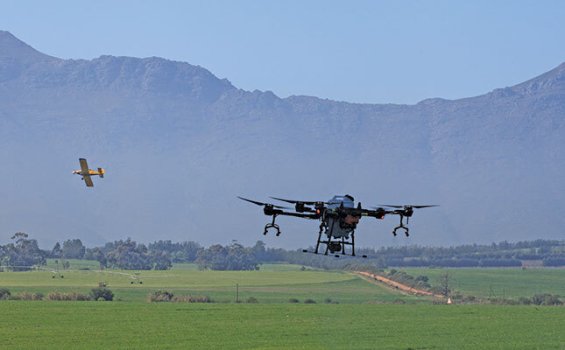K
Kathleen Martin
Guest
Sugar cane responds well to a ripening spray at about eight weeks before harvest. But Tim Wise, who grew up on a sugar cane farm in KwaZulu-Natal (KZN), remembers how his family struggled with uneven and inaccurate delivery of this spray by crop-spraying aircraft.
Sugar cane in South Africa is usually cultivated on hilly terrain with steep gradients, and the average field size is small, at around 6ha. These factors, combined with coastal winds and obstacles such as electricity pylons, natural bush lines and cell phone towers, make low-level flying difficult and dangerous.
To make matters worse, the ripening spray is often essentially a low-concentrate herbicide, so it is crucial to prevent spray from drifting onto other crops or neighbouring cane fields at a different growth phase.
Together, all these factors frequently result in inaccurate application by aeroplane, and hence failure to achieve full and even coverage over the crops requiring ripening.
The problem led a group of KZN farmers to fund a world tour in 2016 to investigate drone technology as an alternative to aircraft for crop spraying.
“In China, we met with DJI, the largest manufacturer of consumer drones in the world,” recalls Wise.
“Initially, we were disappointed by the lack of functionality and efficiency of their first-version drones, as these had been developed largely to service the local subsistence rice industry. They were designed to work on small, flat, symmetrical fields.”
Designing an appropriate drone DJI then asked the farmers to provide the functionality required to unlock the sugar cane-spraying market in South Africa. A trained IT business analyst, Wise set to work upon his return.
“I drafted and sent a specification document for a drone that would be capable of spraying effectively in our challenging KZN conditions. I didn’t expect to have an influence on the research and development (R&D) of a major company like DJI, so at that stage my company, Precision Agricultural Systems (PACSys), was still planning on developing and building our own spray drones to our specifications.
“I was stunned, therefore, when DJI invited us back to China only six months later and presented us with their newly designed spray drone, incorporating most of the functionality we’d proposed.”
This, he says, was when he realised it made sense to negotiate the DJI Agriculture distribution agency for Southern Africa.
Continue reading: https://www.farmersweekly.co.za/agri-technology/machinery-equipment/new-generation-crop-spraying-drones/
Sugar cane in South Africa is usually cultivated on hilly terrain with steep gradients, and the average field size is small, at around 6ha. These factors, combined with coastal winds and obstacles such as electricity pylons, natural bush lines and cell phone towers, make low-level flying difficult and dangerous.
To make matters worse, the ripening spray is often essentially a low-concentrate herbicide, so it is crucial to prevent spray from drifting onto other crops or neighbouring cane fields at a different growth phase.
Together, all these factors frequently result in inaccurate application by aeroplane, and hence failure to achieve full and even coverage over the crops requiring ripening.
The problem led a group of KZN farmers to fund a world tour in 2016 to investigate drone technology as an alternative to aircraft for crop spraying.
“In China, we met with DJI, the largest manufacturer of consumer drones in the world,” recalls Wise.
“Initially, we were disappointed by the lack of functionality and efficiency of their first-version drones, as these had been developed largely to service the local subsistence rice industry. They were designed to work on small, flat, symmetrical fields.”
Designing an appropriate drone DJI then asked the farmers to provide the functionality required to unlock the sugar cane-spraying market in South Africa. A trained IT business analyst, Wise set to work upon his return.
“I drafted and sent a specification document for a drone that would be capable of spraying effectively in our challenging KZN conditions. I didn’t expect to have an influence on the research and development (R&D) of a major company like DJI, so at that stage my company, Precision Agricultural Systems (PACSys), was still planning on developing and building our own spray drones to our specifications.
“I was stunned, therefore, when DJI invited us back to China only six months later and presented us with their newly designed spray drone, incorporating most of the functionality we’d proposed.”
This, he says, was when he realised it made sense to negotiate the DJI Agriculture distribution agency for Southern Africa.
Continue reading: https://www.farmersweekly.co.za/agri-technology/machinery-equipment/new-generation-crop-spraying-drones/

